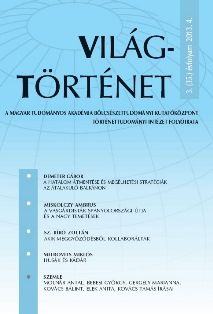A mauritiusi zsidó száműzöttek (1940-1945)
Jewish Refugees in Mauritius (1940-1945)
Author(s): Artur PatekSubject(s): History
Published by: Magyar Tudományos Akadémia Bölcsészettudományi Kutatóközpont Történettudományi Intézet
Summary/Abstract: During the World War II, approximately 1.500 European Jews who had been previously denied the right to settle in Palestine were redirected to the island of Mauritius. In October 1940 three vessels sailed from the Rumanian port of Tulcea – the Atlantic, the Milos and the Pacifi c, carrying some 3.500 immigrants from Europe. At the beginning of November, the Pacific and the Milos reached Haifa, and their passengers were transferred by the British to Patria. The British Colonial Office was determined to refuse entry to the immigrants. The Haganah leaders wanted to prevent the Patria from leaving port by sabotage. On November 25, 1940, Haganah liaison offi cers detonated a mine aboard the ship. The ship sank, and some 250 people (200 of them Jews) drowned. The surviving refugees from the Patria, together with the remaining 1,560 passengers of the Atlantic, were taken to the Atlit detainee camp. Later the Patria survivors were eventually permitted to remain in Palestine, but the other passengers were deported to Mauritius, where they spent the rest of the war. The group was sent to the prison of Beau Bassin which was officially known as the Detainment Camp. Men were segregated from women and husbands separated from their wives. Though they were not ill-treated, all suffered from tropical diseases, shortage of food and inadequate clothing. At the end of the war, the refugees were granted the choice of returning to their home countries or make aliyah – the immigration to Israel. Most of them sailed to Eretz Israel, the Promised Land on 12 August 1945.
Journal: Világtörténet
- Issue Year: 2013
- Issue No: 4
- Page Range: 499-514
- Page Count: 16
- Language: Hungarian

